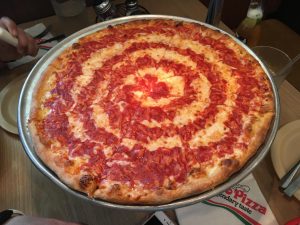Russia and Ukraine crisis
April 10, 2022
Since February 24, the tension between Russia and Ukraine has been one of the most common conversations worldwide. Since the continuity of Russia’s invasion of Ukraine until the end of February, this war has created over 1400 casualties among civilians. At the same time, the reason for the battle has a more profound history.
Color Revolutions
In 2004, After the pro-Western candidate, Viktor Yushchenko, lost to the pro-Russia candidate Viktor Yanukovych’s election in Ukraine.
In late 2013 and early 2014 – 93 days of demonstrations broke out in Ukraine, demanding that the government abandon Russia in favor of Europe. Instigated by Western politicians, the peaceful protest quickly degenerated into clashes between police and civilians, with unidentified third-party shooters shooting at demonstrators and police, escalating the violence. According to the Ukrainian Health Ministry, the campaign killed 123 people and injured more than 2,000. In the end, Viktor Yanukovych, the democratically elected president, was ousted, and Petro Poroshenko, the oligarch who helped lead the demonstrations, took power and moved Ukraine closer to the West.
In 2014 – Ukraine started the “Pro-EU Demonstration movement.” But Ukraine, with a pro-Western president, is still outside NATO and the European Union, and its economic situation is worsening because of its hostility with Russia. In 2015, Ukraine’s GDP fell by nearly 10%, and its industrial GDP by 13.4%. In 2018, it became the poorest country in Europe.
The massive demonstrations also prompted Russia to occupy the Pro-Russian region of Crimea in 2014 and support Pro-Russian militias in the Eastern Donbas region. The “Donetsk People’s Republic” and the “Luhansk People’s Republic” were established at that time.
Donbas and Crimea crisis
At the end of 2014- Same as The “Donetsk People’s Republic” and the “Luhansk People’s Republic,” the Donbas and Crimea declared their independence despite the belief in national self-determination.
After the separation of USSR, the people in Donbas believe they have faced “unfair treatment” from Kyiv. Over 90% of Donbas’s population tends to be pro-Russia. In a similar way, Crimea believed in separatism because of the lack of economic support for drinking water.
Putin believes both of these countries are part of Russia’s new territories.
FireLine
Since March 2021, Putin believed the east expansion of NATO threatened the national security of Russia, and Ukraine has shown a strong desire to join NATO to seek both economic support and military allies. In December 2021, Putin warned Ukraine to withdraw troops from their border-line and stop joining NATO, but that request was refused.
Since February, Putin has moved and reserved over 100,000 troops in Crimea, Belarus, and Donbas. Several conferences had been hosted, but none have made any diplomatic progress. As a result, Russia started the war without any official declaration and agreement from the UN.
Moscow has not made significant progress of defeating Ukraine, despite the devastation and death in that country. Instead, the sanctions on Russia and moral criticism from other countries batter the Russian economy in an effort to demonstrate to Putin that this war will not succeed.



















